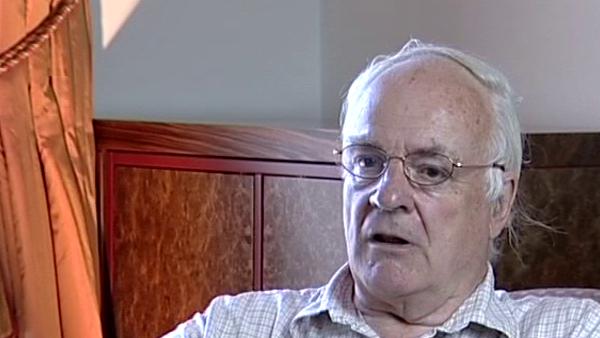I went for a year to Bar Harbor, I wrote another of these squiffy letters to- to George Snell. I mean these days I don't- it would be found in the wastepaper basket I doubt not. And I proposed to George Snell how it would be possible to study histocompatibility genes. Not realising- I actually don't know how much he published at the time, but he was right in the middle of the project. So he said, sure come to- to Bar Harbor. You're bringing your own money, so that's no problem. You can have as many mice as you like, which was what- I was certainly keen on that. And, I'm going off to Texas to- for a sabbatical year to write my book on ethics. So that's what happened. And George Snell was a perfect New England gent and he made me welcome, then he said good bye, then he came back, I think, once or twice during the year. At the end of the year he said, well, what have you been doing, and I showed him what I'd been doing, and he said, oh that's terrific. We'll go and tell Prexy Little. So he ushered me in to Prexy Little's, C. C. Little's, office. I sort of vaguely knew that I- I think I didn't know so clearly at the time that Little and Jack, J. B. S. Haldane were- had been such friends. I don't know that they were close friends, but intellectual they were close and so that was wonderful. And Bar Harbor had people who- a group of scientists who remained life- long friends, Will Silver, the man who did more about coat colour genetics than anybody else, in the long run, and many other fields too. Darcy Wilson was there who became a very distinguished geneticist eventually. He was a- I think he was almost a volunteer or a beginner there. It was really nice in Bar Harbor. The- George Snell was still- I remember at the time when- I remember- He wouldn't talk about antigens in the H2 complex. He called them transplantation factors. So I took it on myself to try to strengthen the evidence that they were factors- I was really following up what I'd been doing in Oxford, returning to the old- my old ground.
Avrion Mitchison, the British zoologist, is currently Professor Emeritus at University College London and is best known for his work demonstrating the role of lymphocytes in tumour rejection and for the separate and cooperative roles of T- and B-lymphocytes in this and other processes.
Title: Working on histocompatibility genes at Bar Harbor
Listeners:
Martin Raff
Martin Raff is a Canadian-born neurologist and research biologist who has made important contributions to immunology and cell development. He has a special interest in apoptosis, the phenomenon of cell death.
Listen to
Martin Raff at Web of Stories
Duration:
2 minutes, 43 seconds
Date story recorded:
June 2004
Date story went live:
24 January 2008






